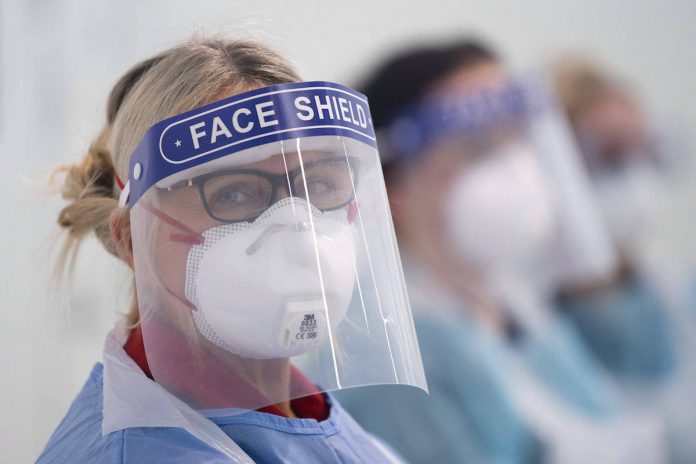Nunavut’s two-week lockdown to slow the spread of COVID-19 was lifted in almost all communities Wednesday as the territory had more recovered than active cases for the first time.
Schools, businesses and workplaces were allowed to reopen, except in Arviat, which had 65 active cases. The coastal community on the western edge of Hudson Bay is to remain shut down for at least two more weeks.
Nunavut had 80 active infections Wednesday and 113 recovered cases for a total of 193. There were 11 new cases – all in Arviat. The territory had not had any cases at all until early November.
Dr. Michael Patterson, Nunavut’s chief public health officer, said his team hadn’t yet determined if community transmission in Arviat is ongoing.
“I know this is a difficult time as these strict measures continue, but please understand it is not meant to punish Arviat. This is the best way to break community transmission and the fastest way to eventually loosening these restrictions,” Patterson said.
The Canadian Red Cross has been on the ground in Arviat to help people self-isolate and to contact trace.
Rankin Inlet and Whale Cove, in the same region as Arviat, still have active COVID-19 cases, but no evidence of community transmission.
Masks remain mandatory in all public spaces in the three communities, although students in Whale Cove and Rankin Inlet do not have to wear them in classrooms as long as they are physical distancing, Patterson said.
He credited Nunavut’s shrinking case count with residents observing public-health orders and the work of contact tracers to “break chains of transmission.”
Prime Minister Justin Trudeau announced Tuesday that the federal government will provide rapid-testing machines to Nunavut’s isolation hotels in Winnipeg. The territory’s public-health orders require anyone who leaves the territory must isolate for 14 days in a southern hotel before flying home.
Patterson said Winnipeg is currently the jurisdiction that poses the biggest risk to Nunavummiut who travel there.
Using the Panbio COVID-19 Ag rapid-testing device, which provides results in 15 minutes, Nunavummiut staying in the hubs will be tested several times throughout their stay.
“The testing will be initially offered to everybody, whether they have symptoms or not … as a way to augment the current isolation practice and reduce the chance of COVID getting through the isolation hubs,” Patterson said.
Nunavut’s first cases of COVID-19 were individuals who completed 14 days of isolation in Winnipeg hotels. Patterson said it’s still unknown how exactly they contracted the novel coronavirus while in isolation and an investigation into how it happened continues.
The Northwest Territories, which has a similar isolation rule, announced Tuesday that residents who leave the territory for non-essential travel will have to pay for their two-week isolation stays.
Lorne Kusugak, Nunavut’s health minister, said Nunavut has considered a similar move, but isn’t making residents pay for isolation stays at this time.
































